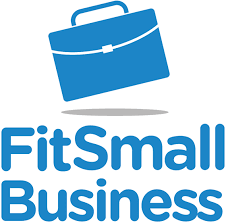Meaghan Brophy | Source | Retail & eCommerce Analyst at FitSmallBusiness.com

Meaghan Brophy
Meaghan Brophy is Fit Small Business's authority on retail and ecommerce. She has provided content and guidance for indie retailers for years as the editor for Independent Retailer, a RetailWire BrainTrust panelist, and speaker at trade shows such as the Independent Retailer Conference, UpperDeck, and NY NOW. She is frequently quoted as a retail expert in top publications like The Washington Post, Forbes, NBC News, Business Insider, Reader’s Digest, and Retail Dive. When not talking retail, Meaghan can be found watching dog videos and practicing her tap dancing skills. She has an M.S. in Publishing from Pace University.
-

FitSmallBusiness.com
Retail & eCommerce Analyst
-
New Customer Experience Needs and Commerce Trends for 2021
Commerce analysts do not see consumers shedding their newfound buying options in the wake of a post-pandemic marketplace. Concerns for health safety, social distancing, and remote working will remain priorities for many shoppers. Merchants who demonstrate that they are able to quickly get products to consumers, resolve issues with customer service, and provide fast delivery and returns will be the ones that thrive.
Article -
Online Grocers Must Modernize Digital Platforms to Thrive
With restaurants and bars closed or at limited capacity, consumers are spending more on groceries than ever before. Online food and beverage sales are forecast to grow by 60 percent in 2020. However, much of how the grocery industry still operates is locked in the norms of the 2000 to 2020 era, with dull, out-of-date and clunky online shopping experiences.
Article -
Rural America Is the Next E-Commerce Frontier
E-commerce is not yet every rural community's Holy Grail for shopping. Many local rural retailers are strangers to e-commerce, and the home delivery routine for rural customers is often very different from the opportunities enjoyed by suburban and city consumers. If stores in rural America want to keep customers happy and healthy, transitioning to e-commerce is key.
Article
-
Apps like PayPal, Venmo, and Cash App offer businesses options to display QR codes for scan-to-pay. Venmo and Cash App do not require users to connect a separate bank account, people can pay using the balance in their app, or get a debit card through the apps themselves.
-
Because residents are more spaced out, e-commerce delivery is significantly more expensive in rural areas. Many e-commerce retailers, even Amazon, rely on the USPS for last-mile delivery in rural areas.
-
In short, there is almost no way for traditional grocers to meet these kinds of shopping demands while still making a profit.



